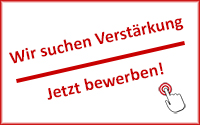Barrier
The barrier is installed underneath the platform of a scissor lift. It is intended to prevent people or parts of peoples' bodies from getting under a moving lifting platform unnoticed.
In this regard it should also be pointed out that the installation of a barrier alone is not sufficient as protective equipment. At least one additional protective device must always be installed. Most lift table manufacturers use a surrounding safety edge for this purpose, which prevents the lifting platform from moving downwards, but allows upward movement.
Bellows, corrugated wire-mesh mats or PVC roller screens are generally used as barriers underneath lift tables as safety measures.
Bellows
Bellows refers to a hose made of rubber, plastic or leather. It can be lengthened and folded like an accordion. Bellows are used for two reasons:
1. To protect movable plant components against external influences.
2. To protect people against moving plant parts.
In a lift table, bellows are mainly used as a barrier underneath the lift table, i.e. the bellows are intended to prevent parts of the body from getting under a moving lifting platform.
However, using only a barrier underneath the scissor lift table is not sufficient. There must be at least one additional guard if there is a risk that persons, especially children, may be in the area of the scissor lift without being noticed.
Belt-drive scissor lift tables
In a belt-drive scissor lift table, the lifting and lowering movement of the platform is driven by belts. Nowadays, flat belts are mostly used for this purpose. These are connected at one end to a gear motor and at the other end to the scissor lift mechanism or a lift carriage. By 'winding' and 'unwinding' the belt on a shaft, the length of the belt is shortened or lengthened and so the platform is moved up or down.
One big advantage of the belt-drive scissor lift tables is the shock and vibration-damped power transmission compared to other types of lift tables. However, the belts used are generally very sensitive to external influences. Higher temperatures or chemical substances can damage the drive train.
You can find a comprehensive comparison of the different lift table designs in our series of articles on Lift table types and their advantages and disadvantages.
Bending radius
The radius on the inside of a bent part is called the bending radius.
Depending on the material and the thickness of the part to be bent, the bending radius may not be less than a certain minimum radius. The bending process compresses the material on the inside while stretching the material on the outside. If the bending radius is less than the minimum bending radius, this could lead to crack formation and/or an unacceptably high change in the cross-section of the component.
The minimum bending radius for steel is usually one to three times the sheet thickness. Accordingly, a bending radius of five to fifteen millimetres must be selected for a plate thickness of five millimetres.
Bio oil
Four different pressure media can be used for hydraulic lift tables:
- Hydraulic oil on a mineral oil basis
- Food-grade hydraulic oil
- Bio oil (biodegradable oil)
- Clear water
Unlike the traditional mineral oils, bio oils are produced from renewable resources. Their advantage is that they are biodegradable and any possible leaks do not lead to major environmental damage. Due to this property, bio oil is mainly used in mobile hydraulics, i.e. where hydraulic machines have direct contact with the environment.
Burst pressure
The pressure at which a pipe or pressure vessel bursts is called burst pressure. As a rule, the burst pressure is a multiple of the nominal pressure of the system. This guarantees sufficient safety against component failure.
When dealing with scissor lifts and column lifts , the burst pressure is a key factor when selecting hydraulic lines and, if necessary, in terms of pressure accumulators.

